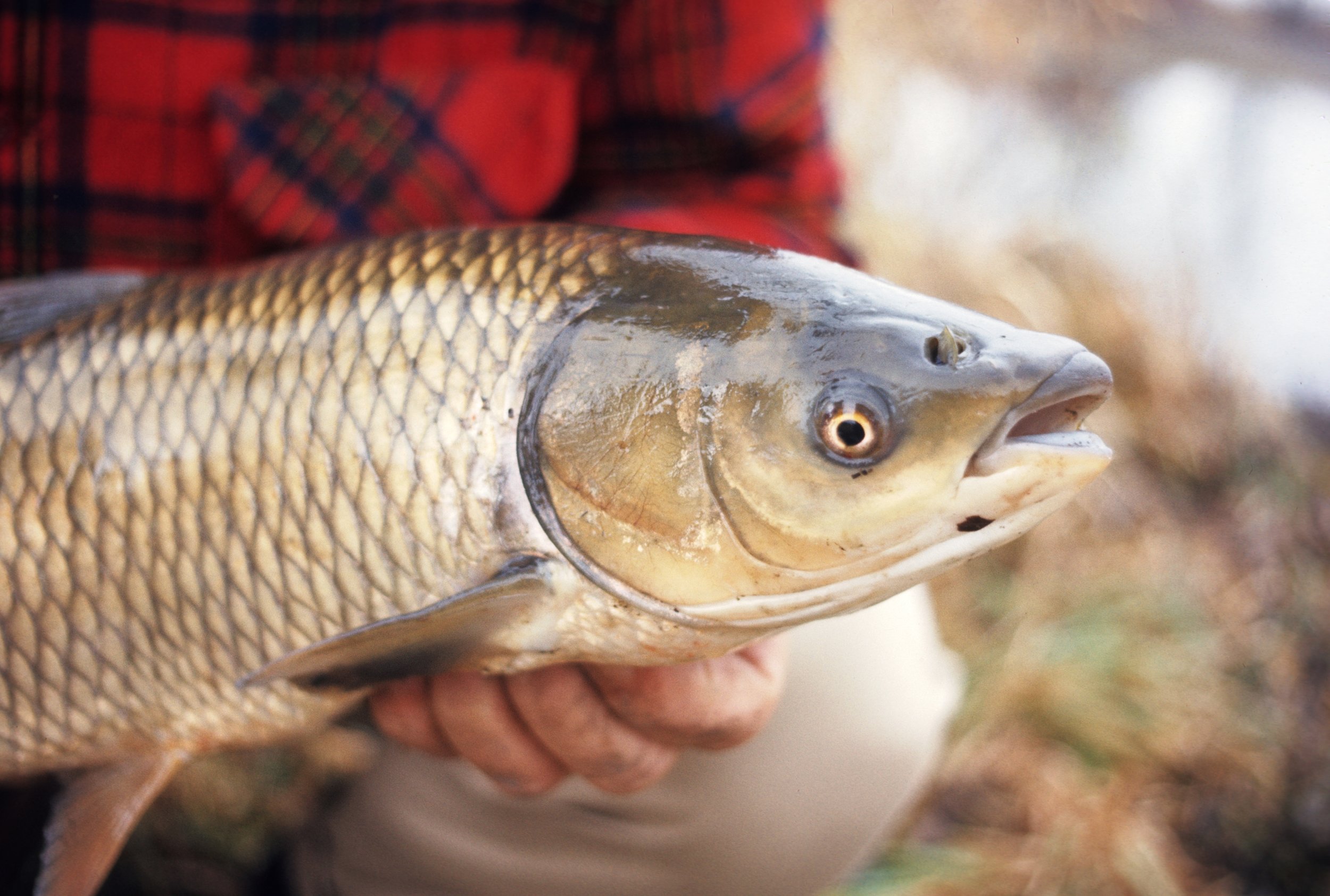Grass Carp
The grass carp (Ctenopharyngodon idella) is the species of fish with the largest reported production in aquaculture globally, over five million tonnes per year. It is a large herbivorous freshwater fish species of the family Cyprinidae native to eastern Asia, with a native range from northern Vietnam to the Amur River on the Siberia-China border. This Asian carp is the only species of the genus Ctenopharyngodon.
It is cultivated in China for food, but was introduced in Europe and the United States for aquatic weed control. It is a fish of large, turbid rivers and associated floodplain lakes, with a wide degree of temperature tolerance. Grass carp will enter reproductive condition and spawn at temperatures of 20 to 30 °C (68 to 86 °F).
In the United States, the fish is also known as white amur, which is derived from the Amur River, where the species is probably native, but has never been abundant. This is not to be confused with the white Amur bream (Parabramis pekinensis), which is not a particularly close relative.
Grass carp have elongated, chubby, torpedo-shaped body forms. The terminal mouth is slightly oblique with non-fleshy, firm lips, and no barbels. The complete lateral line contains 40 to 42 scales. Broad, ridged, pharyngeal teeth are arranged in a 2, 4-4, 2 formula. The dorsal fin has eight to 10 soft rays, and the anal fin is set closer to the tail than most cyprinids. Body color is dark olive, shading to brownish-yellow on the sides, with a white belly and large, slightly outlined scales.
The grass carp grows very rapidly. Young fish stocked in the spring at 20 cm (7.9 in) will reach over 45 cm (18 in) by fall. The average length is about 60–100 cm (23.5–39.5 in). The maximum length is 2.0 m (6.6 ft) and they grow 100 kg (220 lb). The grass carp's maximum weight is 99 lbs. According to one study, they live an average of five to 9 years, with the oldest surviving 11 years. In Silver Lake Washington there is a thriving population of grass carp passing the 15 year mark. They eat up to three times their own body weight daily. They thrive in small lakes and backwaters that provide an abundant supply of freshwater vegetation.
This species occurs in lakes, ponds, pools, and backwaters of large rivers, preferring large, slow-flowing or standing water bodies with vegetation. In the wild, grass carp spawn in fast-moving rivers, and their eggs, which are slightly heavier than water, develop while drifting downstream, kept in suspension by turbulence. The eggs are thought to die if they sink to the bottom.
Adults of the species feed primarily on aquatic plants. They feed on higher aquatic plants and submerged terrestrial vegetation, but may also take detritus, insects, and other invertebrates.

By Chesapeake Bay Program. CC BY-NC 2.0, via Flickr

By Wisconsin Department of Natural Resources. CC BY-ND 2.0, via Flickr
